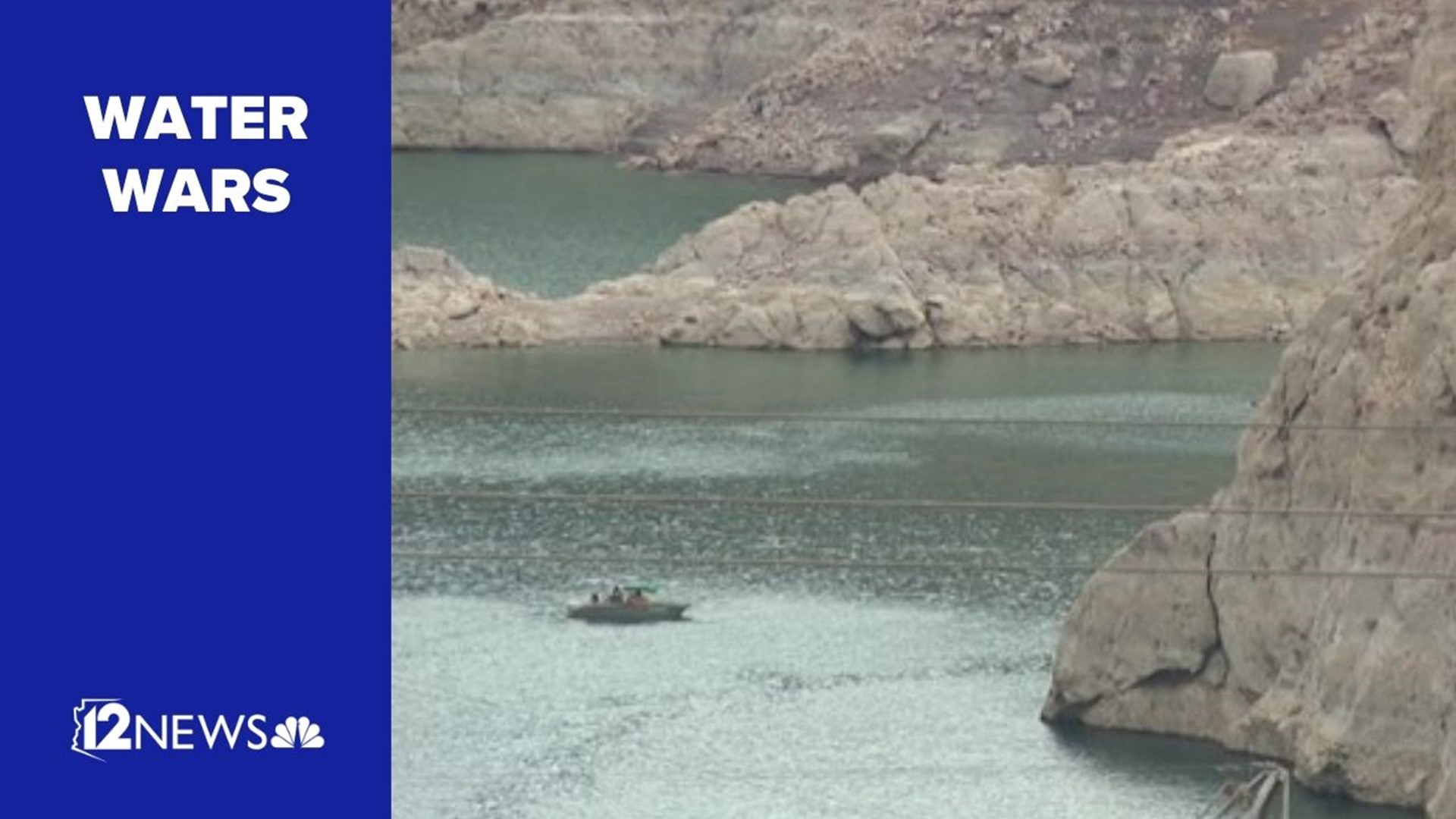PHOENIX — Editor's note: The above video aired during a previous broadcast.
Recent talks surrounding water in Arizona have stressed that "not having enough" is the main issue the state is facing.
Salt River Project (SRP) officials made sure to speak about how they're planning on combating the ongoing, historic megadrought at a recent conference.
But the utility company also stressed they're preparing for an issue that only seems possible in the dreams of Arizonans: floods. Having too much water may actually be a problem central Arizona faces within the next decade, according to data presented at the conference.
"[Previous data] have the longest drought lasting 35 years", said SRP scientist and meteorologist Bo Svoma. "We're in year 27, so I'll say within 10 years we'll be out of the drought."
Arizona has reportedly seen a repeated 63-year cycle of fluctuating water levels over the past two centuries. 2022 lands on the low curve of that cycle, signaling large increases in rain and snow levels will be seen in the coming years.
“After drought, comes the flood,” SRP Watershed Management Manager Charlie Ester said. “We’re expecting the wet years to get a lot wetter.”
Floods in Phoenix not a too-distant memory
It wasn't too long ago the Valley was essentially split in half by the flowing Salt River, one of the rivers SRP relies on.
The Tempe History Museum previously posted photos from the 1970s showing the river known for dividing Phoenix into north and south flowing through the desert.
SRP's reservoirs staying filled amid drought...
Drought hasn't affected SRP's water storage reservoirs like it has the Colorado River, representatives said at the conference. Water levels at the company's two largest reservoirs, Bartlett Lake and Roosevelt Lake, have remained the same and, in some cases, are even higher than they have been 10 years ago.
Roosevelt Lake has seen an increase, sitting at 62% filled today compared to 44% filled a decade ago. Bartlett Lake currently sits at 51% capacity, the same level it was at in October 2012.
...thanks to pumping groundwater
Part of why SRP's reservoirs haven't seen much of a change is thanks to the company pumping groundwater from two Valley water sub-basins and partly filling the reservoirs with it.
Even with the supplemental pumping, data show water levels in the sub-basins SRP is using, the East Salt River Valley Basin and the West Salt River Valley Basin, also haven't changed in the past 20 years.
Water Wars
Water levels are dwindling across the Southwest as the megadrought continues. Here's how Arizona and local communities are being affected.

